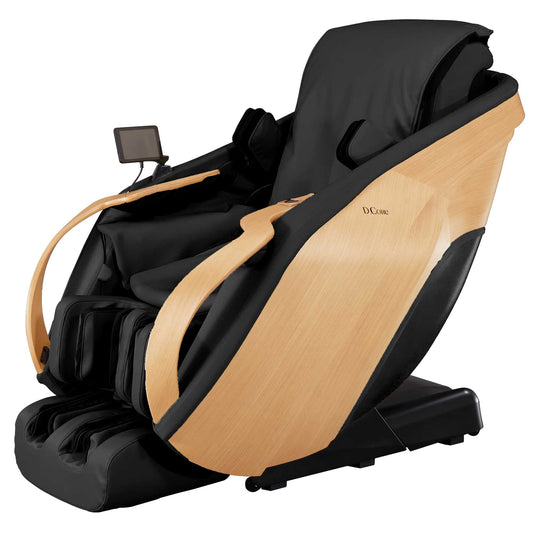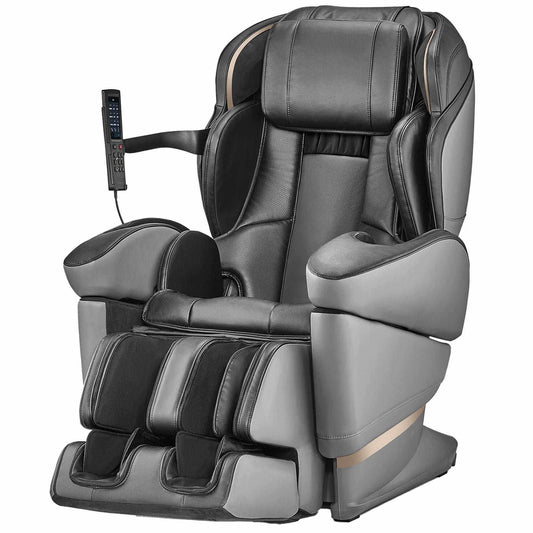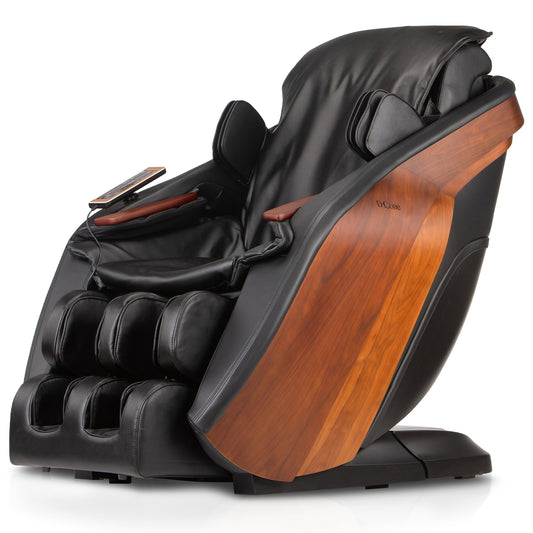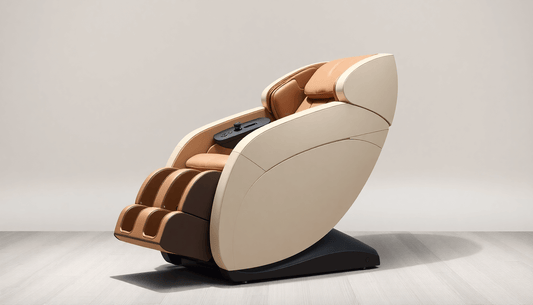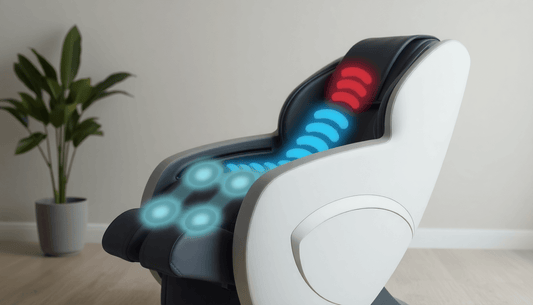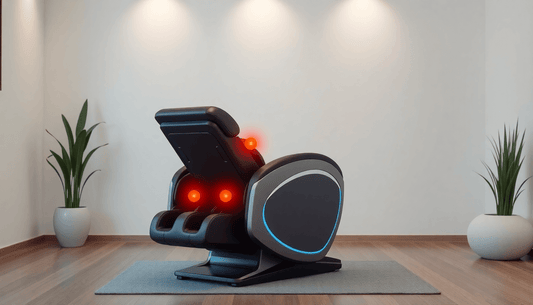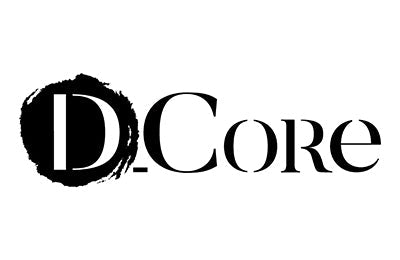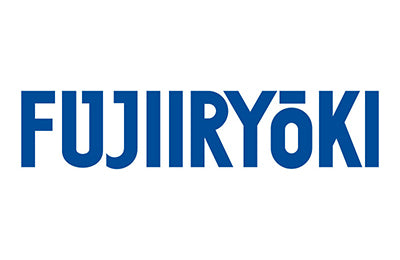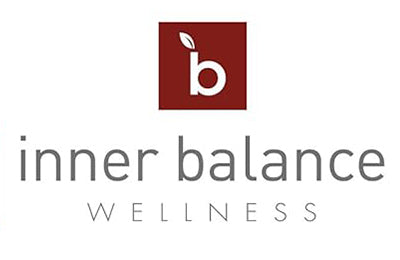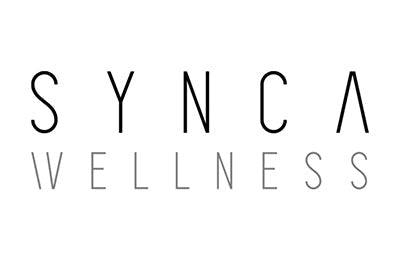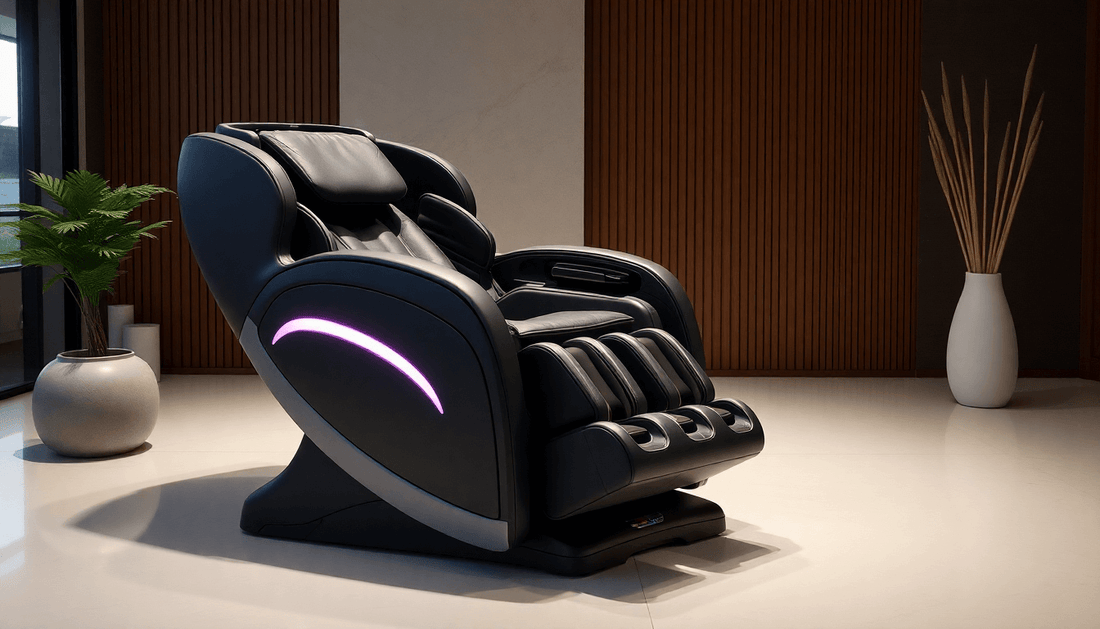
How to Choose the Best Fujiiryoki Massage Chairs for You
Introduction — A Complete Day-by-Day Exploration
This exhaustive guide walks you through four flagship Fujiiryoki massage chair models across a day-by-day presentation: Calm Plus, Cyber Relax AI, Cyber Relax Pro, and Cyber Relax Elite. Each day focuses on one model, covering features, signature massage techniques, an ankle-to-head routine, targeted body parts, therapeutic benefits, recommended session plans, safety considerations, maintenance tips, and how to decide which model fits your lifestyle.
Why This Format Helps You Choose
- One model per day lets you compare routines, intensity and benefits side-by-side.
- Detailed ankle-to-head protocols clarify how each chair treats specific zones: feet, calves, knees, thighs, back, neck, shoulders and head.
- Technique-to-benefit mapping helps you select a model based on outcomes: stress relief, pain management, recovery, or spine support.
Core Massage Techniques — What They Do and When to Use Them
- Swedish Massage: Long gliding strokes to promote relaxation, aid circulation and gently stretch soft tissue.
- Deep Tissue Massage: Focused pressure to release myofascial adhesions and encourage lengthening of tight muscles.
- Trigger Point Massage: Direct pressure on knots to reduce local pain and restore muscle function.
- Acupressure: Pressure on traditional points to stimulate local circulation and nervous-system responses.
- Shiatsu Massage: Alternating pressure and release along meridians to balance tension and improve mobility.
- Reflexology: Targeted stimulation of foot and heel zones to influence systemic relaxation and circulation.
- Kneading: Circular, lifting motions to enhance tissue pliability and drain metabolic waste from muscles.
How Techniques Map to Therapeutic Benefits
- Blood Flow Control: Swedish, kneading and reflexology enhance peripheral circulation.
- Fatigue Relief: Gentle Swedish, reflexology and kneading ease tired muscles.
- Flexibility Improvement: Deep tissue, kneading and Swedish strokes combined with passive stretching.
- Injury Recovery: Trigger point and targeted deep tissue work (used conservatively and with clinician approval).
- Muscle Therapy: Deep tissue and kneading to break adhesions and restore muscle function.
- Pain Relief: Trigger point release, shiatsu and acupressure to reduce chronic pain signals.
- Spine Alignment: Long-rail roller designs and decompression techniques to reduce spinal compression.
- Stress Relief: Mixed Swedish, shiatsu and scalp/head work to calm the autonomic nervous system.
- Tissue Therapy: Kneading, deep work and sustained pressure to improve connective tissue health.
Day 1 — Fujiiryoki Calm Plus: Daily Comfort, Circulation & Low-Impact Recovery
Overview: Calm Plus is engineered for daily relaxation and circulation support. It excels at delivering predictable, low-to-moderate intensity programs ideal for stress reduction and gentle recovery.
Key Features and Use Cases
- Balanced kneading and mild shiatsu nodes for consistent comfort.
- Foot reflex zones optimized for plantar and heel therapy.
- Appropriate for users who prefer gentle daily sessions or are new to massage chairs.
Recommended Ankle-to-Head Routine (Calm Plus)
- Feet & Heel (5-8 minutes): Begin with reflexology to warm feet and activate venous return; focus on plantar arches and heel nodes.
- Ankle & Calf (4-6 minutes): Use rolling and light kneading to relieve stiffness and reduce fluid pooling.
- Knee & Thigh (4 minutes): Soft compression and kneading to ease muscle tightness after walking or standing.
- Lower Back & Lumbar (8-10 minutes): Gentle sweeping kneads to relieve everyday lumbar tension and encourage spinal relaxation.
- Upper Back, Neck & Shoulder (6 minutes): Wide, calming shiatsu and light kneading to treat posture strain.
- Head & Scalp (2-4 minutes): Low-intensity calming strokes to reduce sympathetic arousal and prepare for sleep.
How Calm Plus Supports Therapeutic Goals
- Stress Relief: Low-intensity patterns reduce cortisol response and encourage parasympathetic activation.
- Blood Flow Control: Reflexology and kneading support microcirculation, especially in lower extremities.
- Fatigue Relief: Daily short sessions reduce peripheral fatigue and soreness.
- Flexibility Improvement: Gentle, consistent use helps maintain soft-tissue elasticity.
Session Planning and Best Practices (Calm Plus)
- Duration: 15-25 minutes per session is optimal for daily maintenance.
- Frequency: Daily or every-other-day use supports recovery and stress management.
- Intensity: Start low; increase only if comfortable. Reserve higher intensities for isolated areas like calves.
- Pair with: Light stretching or breathing exercises to compound relaxation benefits.
Day 2 — Fujiiryoki Cyber Relax AI: Sensor-Driven Personalization and Targeted Relief
Overview: Cyber Relax AI introduces adaptive mapping and smart pressure modulation. Built-in sensors analyze body contours and tension to tailor programs in real-time, offering more targeted relief than generic chairs.
Key Features and Use Cases
- AI-guided body scan and adaptive technique selection.
- Targeted trigger point detection and modulation of roller pressure.
- Recommended for users who want personalized sessions and targeted recovery after training or long workdays.
Recommended Ankle-to-Head Routine (Cyber Relax AI)
- Initial Body Scan (1-2 minutes): Let the AI map spinal curvature and pressure points to customize intensity and roller paths.
- Feet & Reflex Zones (5 minutes): Adaptive reflexology where the AI applies stronger or softer zones based on foot sensitivity.
- Ankle & Calf (5 minutes): Alternating compression and kneading to aid venous return and reduce edema risk.
- Knee & Thigh (4 minutes): AI targets trigger points common to runners or desk workers.
- Full Spine & Lower Back (10 minutes): AI uses mapped pressure to decompress and balance spinal segments.
- Neck & Shoulders (7 minutes): Smart shiatsu and micro-adjustments for posture-related stress.
- Head & Scalp (3 minutes): Soothing strokes to reduce tension-type headaches and promote sleep readiness.
How Cyber Relax AI Supports Therapeutic Goals
- Injury Recovery: The AI can focus on painful areas without overstressing nearby tissues if used as part of a broader rehab plan.
- Pain Relief: Adaptive pressure reduces pain by applying precise node pressure rather than broad, blunt force.
- Spine Alignment: Dynamic mapping maintains consistent roller contact and supports decompression.
- Muscle & Tissue Therapy: Adaptive programs ensure deep work is targeted where needed while sparing sensitive zones.
Session Planning and Best Practices (Cyber Relax AI)
- Run the body scan when you first set up the chair and after any weight fluctuation or posture change.
- Use the AI-guided recovery programs after sports, long travel, or intense workdays for targeted restoration.
- When focused pain persists, reduce intensity and complement sessions with clinician-directed exercises.
Day 3 — Fujiiryoki Cyber Relax Pro: Deep Therapeutic Work for Recovery and Performance
Overview: Cyber Relax Pro is built for users who need deeper, more forceful massage options. Stronger motors, extended roller rails and enhanced compression features make it suitable for athletes, labor-intensive professions and chronic tension management.
Key Features and Use Cases
- High-torque rollers and extended rails for greater coverage and deeper penetration.
- Robust trigger point and deep tissue programs for chronic knots and athletic recovery.
- Ideal for serious users who need therapeutic intensity and customizable deep work.
Recommended Ankle-to-Head Routine (Cyber Relax Pro)
- Warm-Up Feet & Lower Legs (6 minutes): Start with reflexology and gentle kneading to mobilize fluid and prepare tissues for deeper work.
- Calf & Ankle Deep Work (6 minutes): Use higher intensity kneading and rolling to break up lactic buildup and tightness.
- Thighs & Legs (5-8 minutes): Focused deep tissue patterns to address tight hamstrings, quads and IT band tension.
- Low Back & Lumbar Decompression (10-12 minutes): Strong rollers and strategic pressure for myofascial release and spinal relief.
- Upper Back, Neck & Shoulders (8-10 minutes): Trigger point and deep kneading to reduce chronic tension and headaches.
- Finishing Head & Scalp (3-5 minutes): Gentle strokes to bring nervous-system arousal down after deep tissue work.
How Cyber Relax Pro Supports Therapeutic Goals
- Muscle Therapy: Deep tissue routines break adhesions and restore range of motion.
- Injury Recovery: Properly dosed deep work speeds recovery when coupled with professional guidance.
- Pain Relief: Focused trigger point pressure reduces localized pain and referral patterns.
- Flexibility Improvement: Releasing chronic tension and scar tissue contributes to improved mobility.
Session Planning and Best Practices (Cyber Relax Pro)
- Limit deep sessions to 20-30 minutes; allow recovery days between intense treatments.
- Hydrate and use gentle stretching post-session to assist metabolic clearance and tissue remodeling.
- Reduce intensity for areas with acute inflammation or broken skin; consult a health professional if unsure.
Day 4 — Fujiiryoki Cyber Relax Elite: Top-Tier Customization & Whole-Body Therapeutics
Overview: Cyber Relax Elite represents the apex of Fujiiryoki engineering: unmatched customization, full-body coverage, advanced spinal mapping and layered technique stacks to deliver clinical-caliber sessions at home.
Key Features and Use Cases
- Full customization with multiple technique layers and fine-grain intensity controls.
- Advanced roller mapping for precise spine and segmental alignment.
- Perfect for power users who want tailored rehab programs as well as restorative relaxation.
Recommended Ankle-to-Head Routine (Elite Full-Body Protocol)
- Multi-Zone Feet & Reflexology (6-8 minutes): Sophisticated reflexology to address organ-related reflex points and plantar tightness.
- Ankle, Calf & Knee (6 minutes): Alternating Swedish and deep kneading for circulation and targeted recovery.
- Thighs & Legs (6-8 minutes): Large-stroke Swedish work with intermittent deep bursts to preserve muscle health and performance.
- Back & Full Spine (12-15 minutes): Precision rollers, acupressure and decompression to support spine alignment and reduce segmental load.
- Shoulders & Neck (8 minutes): Multi-angle shiatsu and trigger point blends to reduce posture-related stress and headaches.
- Head & Scalp (4 minutes): Comforting, slower strokes to reduce sympathetic drive and promote restorative sleep.
How Cyber Relax Elite Supports Therapeutic Goals
- Spine Alignment: Engineered roller movement and intelligent decompression support segmental balance.
- Stress & Pain Relief: Layered techniques allow precise transitions from relaxation to rehabilitative work.
- Blood Flow & Flexibility: Swedish strokes paired with deep releases maximize tissue pliability and vascular benefit.
- Tissue & Muscle Therapy: Progressive intensity programming supports long-term musculoskeletal health.
Session Planning and Best Practices (Cyber Relax Elite)
- Create and save custom programs: e.g., morning circulation, post-workout deep recovery, pre-sleep relax.
- Rotate session types across the week to balance recovery and performance: light-day, deep-day, alignment-day.
- Use lower intensity for neck and upper cervical area; high torque for large muscle groups only.
Daily, Weekly and Monthly Routines — Practical Plans to Maximize Benefits
Below are sample schedules tailored to different goals. Each plan uses the model strengths described above as examples; adapt intensity and durations to personal comfort and medical advice.
- Stress Management Plan (Daily Calm Plus/Ai): 15 minutes daily focusing on feet, low back and shoulders with Swedish and shiatsu patterns. Emphasize breathing and end with 2-3 minutes of scalp work.
- Athletic Recovery Plan (Pro/Elite): 2-3 sessions weekly. Post-workout 20 minutes with deep kneading for calves, thighs, and targeted trigger point work on the back. One full elite alignment session weekly for spine balance.
- Rehab & Chronic Pain Plan (AI/Pro): Alternate AI-guided targeted sessions with Pro deep-tissue work twice per week, integrated with physiotherapy exercises and clinician oversight.
- Whole-Body Maintenance Plan (Elite): 3-4 sessions weekly, mixing Swedish for circulation, acupressure for spinal health, and reflexology for systemic balance.
Choosing the Right Model — Decision Checklist
- If you want gentle, daily relaxation: Calm Plus.
- If you want adaptive, personalized sessions: Cyber Relax AI.
- If you want deeper therapeutic work and athletic recovery: Cyber Relax Pro.
- If you want ultimate customization, whole-body therapy and advanced spinal features: Cyber Relax Elite.
- Budget, space and the height/weight range of users should factor into choice.
Safety Guidelines and Contraindications
- Consult a healthcare professional before using a massage chair if you have active cancer, recent surgery, fractures, deep vein thrombosis, severe osteoporosis, pacemakers, or are pregnant.
- Avoid high-intensity deep tissue directly over inflamed or bruised areas.
- Do not exceed recommended session durations for deep settings; overuse can exacerbate muscle soreness.
- Stop use immediately if you experience increased pain, dizziness, numbness or unusual symptoms.
Setup, Calibration and Optimization Tips
- Place the chair on a level surface with adequate clearance for recline and extension.
- Run the initial body scan on AI-enabled models after each significant change in user weight or posture habits.
- Align the chair so rollers track the center of your spine; improper alignment reduces therapeutic effectiveness.
- Use built-in heat or zero-gravity features (if available) strategically: heat before deep work; zero-gravity for decompression sessions.
Maintenance and Longevity
- Keep the chair clean and free from dust; vacuum around rollers and air intakes periodically.
- Follow manufacturer guidelines for upholstery care; avoid harsh chemicals.
- Perform recommended maintenance checks on motors and rollers per the service schedule.
- If you notice unusual noises, power issues, or reduced performance, contact official service for inspection.
Troubleshooting Common Issues
- Uneven pressure: Re-run body scan and check user positioning.
- Persistent soreness after sessions: Lower intensity, shorten sessions, or switch to gentler techniques.
- Machine not powering on: Check outlet, power switch and breaker; consult manual before service call.
- Foot or calf nodes feel too intense: Reduce intensity for lower limbs or choose a different program with lighter reflexology.
Evidence-Based Considerations and Responsible Claims
Massage techniques such as Swedish, deep tissue, trigger point and reflexology have been studied for effects on muscle tension, circulation and subjective pain and stress reduction. Massage chairs replicate many of these techniques mechanically. While many users report meaningful improvements in well-being, individual results vary based on condition severity, frequency of use and concurrent therapies. Massage chairs are an adjunct to — not a replacement for — clinical care when managing significant injuries or chronic medical conditions.
Frequently Asked Questions (FAQ)
- Q: How long before I notice benefits? A: Many users feel immediate relaxation after a session; measurable improvements in pain or flexibility can take days to weeks with consistent use.
- Q: Can massage chairs worsen an injury? A: If used improperly (too intense, over an acute injury area), they can exacerbate symptoms. Always consult a clinician for acute or complex conditions.
- Q: Which model is best for athletes? A: Cyber Relax Pro or Elite for their deeper tissue capabilities and advanced recovery features.
- Q: Is AI-guided mapping worth it? A: For users with variable tension patterns or multiple users with different body shapes, AI mapping improves targeting and comfort.
Sample 4-Week Program — Progressive Plan Using All Four Models
Week 1: Foundation — Calm Plus daily 15-minute relaxation sessions focusing on circulation and stress reduction.
Week 2: Personalization — Two Cyber Relax AI sessions (20 minutes) focusing on targeted trigger point relief after workouts or long workdays.
Week 3: Intensive Recovery — Two Cyber Relax Pro sessions (20–30 minutes) focused on deep tissue therapy and flexibility work; continue Calm Plus for light days.
Week 4: Integration & Alignment — One Cyber Relax Elite full-body session (30–40 minutes) weekly for spinal alignment and holistic recovery; rotate Pro for heavy recovery and Calm Plus for daily maintenance.
Wrap-Up — How to Use This Guide
Use this day-by-day presentation as a practical playbook. Start with model features and recommended ankle-to-head routines, then adopt one of the sample plans that match your goals. Adjust intensity and frequencies according to comfort and any professional guidance. Over time, collect data on sleep quality, pain levels and functional mobility to evaluate which routines deliver the best outcomes for you.
Call to Action
Pick the model that aligns with your primary goal — relaxation (Calm Plus), adaptive therapy (Cyber Relax AI), deep recovery (Cyber Relax Pro) or comprehensive customization (Cyber Relax Elite) — and begin with the sample routines. Track progress over four weeks and iterate programs to optimize results.
Further Reading and Next Steps
- Keep a short session log to monitor perceived pain, sleep quality and muscle recovery.
- Pair chair sessions with light mobility work and hydration for enhanced outcomes.
- Consult a licensed health professional for chronic pain, injury rehabilitation or when integrating chair therapy into a structured medical plan.
This extended guide aims to help you explore each Fujiiryoki model with clarity and confidence. Use it to design routines, compare models, and maximize therapeutic benefits from ankle to head while practicing safety and evidence-informed choices.
